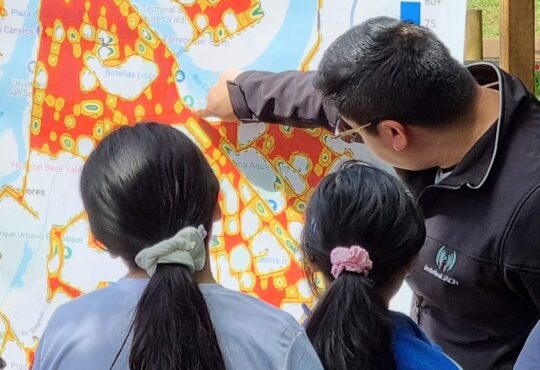Invitan a seminario sobre Guía Quirúrgica por Audio: herramientas de intervención médica durante procedimientos mínimamente invasivos
El Webinar se realizará 18 de diciembre, 15:00hrs (hora de Chile), vía plataforma Zoom
En esta oportunidad, se contará con la participación del Dr. Alfredo Illanes , SURAG Project Leader, INKA – Innovation Laboratory for Image Guided Therapy – Medical Faculty, Otto-von-Guericke University Magdeburg, Germany.
El seminario se titula Surgical Audio Guidance – SURAG: listening to medical interventional tools during minimally invasive procedures
El viernes 18 de diciembre, 15:00hrs (hora de Chile) bastará conectarse por el medio del enlace: https://zoom.us/j/97555349676

Actuará como moderador el Dr. Jorge Arenas, Académico Instituto de Acústica UACh.
Abstract:In minimally invasive procedures, navigation of Medical Interventional Device (MID) is a challenging task. The clinicians’ experience is an essential pre-requirement to complete the procedures without damaging structures or organs. These procedures can be combined with real-time guidance imaging techniques. However, there are potential errors due to many imaging artifacts and a limited range for moving the tracked equipment.
Sensor-based solutions have been proposed for improving the accuracy by acquiring additional guidance information from MIDs. This typically requires the sensors to be embedded in the MID tip, leading to direct tissue contact, sterilization issues, and added complexity and cost. Therefore they have encountered difficulties to be adopted for regular clinical use.
Considering these issues, the Innovation Laboratory for Image Guided Therapy (http://inka-md.de/) at the Medical Faculty of the Otto-von-Guericke University Magdeburg, Germany, came up with a new concept for acquiring additional complementary information for guiding MIDs in minimally invasive procedures. This concept is based on using acoustic emission (AE) with a sensor connected at the proximal end of the tool to capture information, non-invasively outside the body, concerning the dynamics occurring between the tip of the tool and the tissue. We have called this concept Surgical Audio Guidance (SURAG). The audio signal resulting from the MID-tissue interactions starting at the tip of the instrument naturally propagates through its shaft so that they can be picked up and detected by an audio sensor located at the proximal end of the instrument. This signal can be then processed to extract useful guidance information that can be then mapped into feedback to surgeons during minimally invasive procedures.
This novel approach’s main advantage is that no sensor is needed to be placed in direct contact with the patient organs and tissues. The development of an AE guidance solution would allow to acquire information from conventional MIDs, as a sort of plug-and-play device without the necessity of rebuild specialized instruments and use the already existing ones. This should result in less complicated solutions than the existing ones, allowing faster clinical approval.
The SURAG concept will be introduced during this seminary, and then proof-of-principles applying this novel concept to different medical tools will be presented. During the last five years, we have demonstrated that audio has many advantages that can be used for providing different types of guidance information during minimally invasive procedures.















